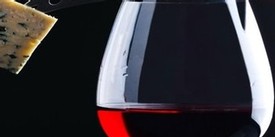In the Cellar with George
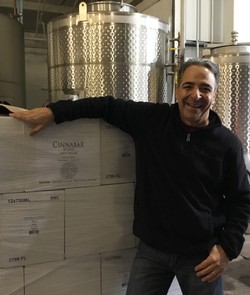 Welcome to In the Cellar with George, a blog in which Cinnabar Winemaker George Troquato shares his insights on wine, wine making, viticulture, and more.
Welcome to In the Cellar with George, a blog in which Cinnabar Winemaker George Troquato shares his insights on wine, wine making, viticulture, and more.
One could say that farming is in George's blood. He began helping his father at Troquato Vineyards in 1985 after graduating Cal Poly with a degree in crop science, before gaining experience working in the cellar and later in the Beaujolais region of France. He has a profound understanding of winemaking—from the vineyard to the glass.
Read more about George's winemaking philosophy.
TEST CB
First Column
Nuances nisi vines connotes grenache grenache musk plum syrah. Pinotage pepper pleasant ad minim toast garnet notes grenache malbec.
Second Column
Nuances nisi vines connotes grenache grenache musk plum syrah. Pinotage pepper pleasant ad minim toast garnet notes grenache malbec. Port with oaky garnet and pinotage cabernet franc small batch chewy silky. And nuances nisi vines connotes grenache grenache musk plum syrah. Port with oaky garnet and pinotage cabernet franc small batch chewy silky.
TEST POST Ageing Cinnabar Wines

Header (optional)
Do you ever wonder why winemakers produce blends? We do it to create wines with added depth, character, flavors, and nuances. Historically, American wines were mainly single varietal. People at that time believed that a wine made from say 100 percent Cabernet Sauvignon was "better quality" and that blending was done to correct “flaws"; whereas, in the Old World, blends are common and have been for decades. For example, Bordeaux, Rioja and Cianti wines are all blends governed by region.
The U.S. wine industry has long since changed its conventional thinking, today creating some of the world's best non-conventional blends. I enjoy creating blends, because I believe that the sum of the parts is greater than its whole. People often tell me that they like blends because the wines seem more complex. In general this is true. Cabernet Sauvignon can be rather tannic, so adding Merlot provides suppleness mid-mouth. Blending Cabernet Franc with Cabernet Sauvignon provides aromas, spice, and structure. Adding Syrah to Cabernet Sauvignon gives a wine more volume and mouthfeel. The synergy between varietals can transform a wine. This is especially true when it comes to blending Petite Sirah into Zinfandel. This blend is a match made in Heaven: Zinfandel provides red fruit character while Petite Sirah imparts black fruit and tannin, elevating the fruit mid-mouth, and giving the wine richness and structure.
Cheers!
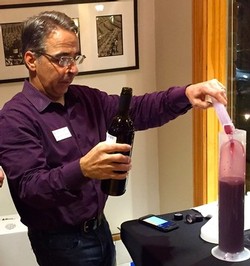
The Secret is in the Blend
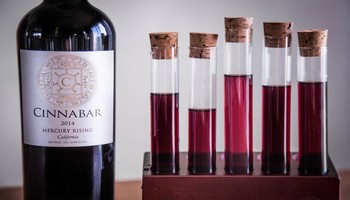
In light of our upcoming blending seminars, I want to discuss why winemakers produce blends. We do it to create wines with added depth, character, flavors, and nuances. Historically, American wines were mainly single varietal, as people tended to believe that a wine made from say 100 percent Cabernet Sauvignon was "better quality" and that blending was done to correct “flaws." But in the Old World, blends have been a common style for decades. For example, Bordeaux, Rioja and Chianti wines are all blends governed by region.
The U.S. wine industry has long since changed its conventional thinking, now producing some of the world's best non-conventional blends.
I enjoy creating blends because I believe that the sum of the parts is greater than its whole. People often tell me that they like blends because the wines seem more complex. In general this is true. Cabernet Sauvignon can be rather tannic, so adding Merlot provides suppleness mid-mouth. Blending Cabernet Franc into Cabernet Sauvignon provides aromas, spice, and structure. Adding Syrah to Cabernet Sauvignon gives the wine more volume and mouthfeel. The synergy between varietals can transform a wine. This is especially true when blending Petite Sirah into Zinfandel—a match made in Heaven. Zinfandel provides red fruit character while Petite Sirah imparts black fruit and tannin, elevating the fruit mid-mouth, and giving the wine richness and structure.
I look forward to seeing you at our Blending Seminars!
Cheers,
George Troquato, Winemaker
Winter in the Vineyard
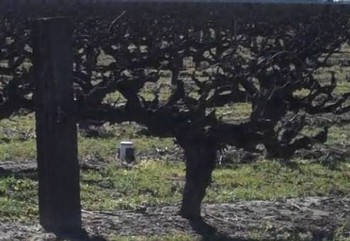
Winter is a quiet time in the vineyard—the vines are dormant, which is the best time for pruning. Regular annual pruning is vital to the health of the vine and helps to control vigor, allowing the vine to produce quality fruit. The main objective is to produce a balanced vine so that dappled sunlight can enter the canopy just enough to ripen the fruit. As a general rule, we need 10 to 14 leaves per cluster of fruit on each cane or branch. There’s more to pruning, however, than a “snip” here and a “snip” there. Pruning takes skill. There are three main pruning methods for wine grapes:
- Head-trained spur pruned (vines trained to a wooden stake) is the earliest for older vineyards, such as Old Vine Zinfandel (shown here), and encourages low-production, high-quality grapes.
- Cane pruning is the most time-consuming and requires the most skill. Cane pruning can offer better frost protection than other methods due to the amount of buds remaining, along with potentially higher cluster counts.
- Spur pruning involves removing the new one-year-old wood growing from the spurs of a cordon (a horizontal shoot), leaving one to three buds on each spur.
Whichever pruning method is used, careful, accurate, and consistent execution is required to maximize both the quality of fruit and the yield.
Cheers,
George Troquato, Winemaker
Life in a Barrel
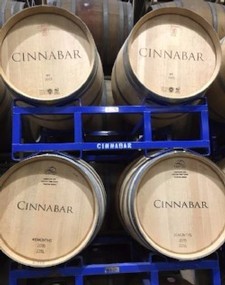
This is a special time of year when wine is developing in-barrel, where harmony is in the making. So, what goes on inside those hallowed, oak halls? As soon as the wine goes in-barrel it undergoes malolactic fermentation (ML)—the process by which the acids in the grape go from malic to lactic. But the acids aren’t the only components. The wood itself plays a critical role. Cinnabar uses American and French oak barrels.
Barrels are made by “coopers.” First, the wooden staves used to create the barrel are weathered outside for two to three years to season the wood and soften the tannins. After the barrel is formed, it is toasted over heat and the sugars in the wood caramelize, adding a level of complexity. Oak barrels differ in character: American oak is sweeter and imparts aromas and flavors of vanilla, coconut, and dill. Whereas, French oak has some vanilla but is less sweet and gives wine more spice and tannin character. Oak barrels also help wine develop by allowing a micro amount of oxygen to interact with the wine, helping the wine evolve from primary fruit (grapy) to complex aromas, flavors, richness, and texture in addition to stabilizing the color and clarifying the wine.
Cheers,
George Troquato, Winemaker
Puttin' On the Heat: Fermentation Time in the Cellar

We may be done harvesting grapes, but there is still a lot of work to do. As I write this, some fermentations are still active. Our Santa Cruz Mountains Chardonnay, which is entirely barrel-fermented using native yeast, can take up to five months to complete primary and secondary fermentation—the conversion of malic acid (tart) in the grapes to lactic acid (soft, buttery quality).
Our other wines are fermented in stainless steel tanks. We make sure that the wines are fully fermented (all of the sugars have been converted to alcohol). At that point, the skins are pressed and the wine is transferred to settling tanks to settle out the solids before putting the wine in barrels. Primary fermentation takes two weeks. Then a new process begins: secondary fermentation, which is a bacterial activity that generally occurs in-barrel. All red wines go through malolactic fermentation (ML) to ensure stability. ML can take a long time so we monitor it until completion, around the start of the new year.
Cheers,
George Troquato, Winemaker
Crush is On!
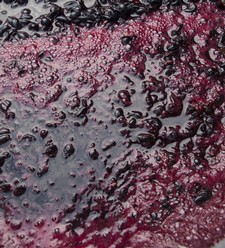
October is a busy time of year in the cellar. Grapes are still arriving from the vineyards while some wines are undergoing fermentation. White grapes go directly into the press where the juice is pressed off and then pumped into a settling tank. From there, our Monterey Chardonnay is tank-fermented; our Santa Cruz Chardonnay is barrel-fermented.
Red grapes bypass the press and go through the destemmer-crusher prior to fermentation. Fermentation is the process by which the natural sugars in the grape juice are converted to alcohol, CO2, and heat through the addition of cultured or native yeast. Native yeast originates on the skins of grapes and from the cellar. Winemakers must keep an eye on many factors during fermentation, but the main emphasis is to maintain a hospitable environment in which the yeast can do their job—to fully ferment the wine dry, which means there is no remaining sugar.
Cheers,
George Troquato, Winemaker
It's Harvest Time
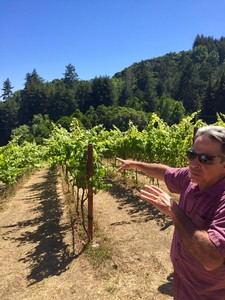
Harvest is upon us! This week we'll be picking grapes for our Santa Cruz Mountain Pinot Noir, Mourvèdre, and Carignan. I'm often asked how do we know when to pick? Many factors contribute to grape ripeness, but the main ones are: sugar, flavor, acid, and pH. The sugar level in grapes is measured in degrees Brix via a device called a refractometer. The preferred sugar level depends on the winemaker and style of wine. Flavor is important and can be deceiving. Sometimes grapes taste very sweet from an early heat spike, but the flavors are still green, requiring more time on the vine.
Acid is important to a wine's structure and ageability. Three main grape acids are malic, tartaric, and citric. If the total acidity of these is too low, then the wines may lack structure and taste weak ("flabby," as we say). Too much acid and the wines may be too sharp. The pH of a wine is crucial because it impacts flavor, color, aroma, stability, and fermentation rate. So knowing when to harvest is based on the alignment of these factors to achieve the best possible wine.
Cheers,
George Troquato, Winemaker
August in the Vineyard
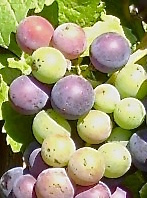
August is an exciting time in the vineyard: berries have reached full size by mid-month, and will then undergo “verasion,” when the yellow-green color develops in white grapes or the darker purple color develops in red grapes. Once verasion is 90 percent complete, we do a “green drop,” where we remove under-ripe clusters, allowing the vine to put more resources into fewer grapes, thus producing more concentrated flavors. With careful irrigation and management of the canopy from June through August, we facilitate the growth of very high quality fruit that requires only a touch of magic in the cellar to produce the most enchanting wines.
Cheers,
George Troquato, Winemaker
